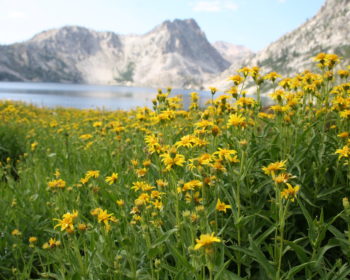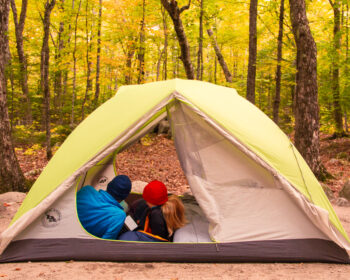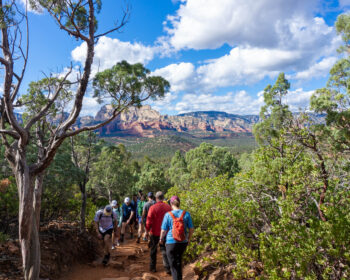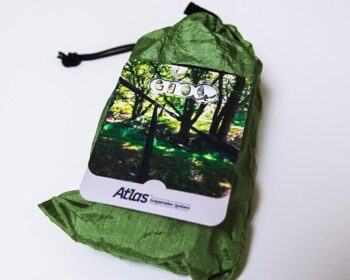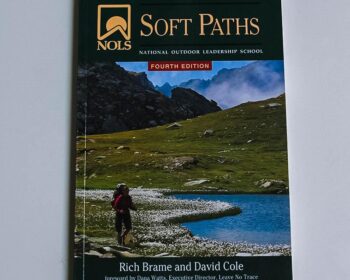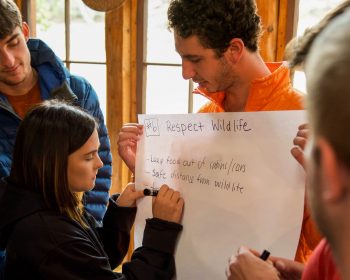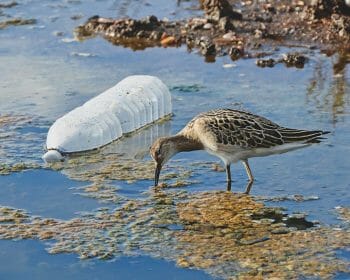Principle 2: Travel & Camp on Durable Surfaces
The goal of travel outdoors is to move through natural areas while avoiding damage to the land, foliage, or waterways. Understanding how travel causes impacts is necessary to accomplish this goal. Travel damage occurs when surface vegetation or communities of organisms are trampled beyond recovery. After traveling to an area, we can have a significant effect on where we decide to camp. The resulting barren area leads to soil erosion and the development of undesirable trails or trampled areas. By understanding the best practices to travel and camp on durable surfaces responsibly, we can minimize human impact on outdoor spaces.
The Basics:
- Durable surfaces include established trails, campsites, rock, gravel, and dry grasses or snow.
- Protect riparian areas by camping at least 200 feet from lakes and streams.
- Good campsites are found, not made. Altering a site is not necessary.
In popular areas
- Concentrate use on existing trails and campsites.
- Walk single file in the middle of the trail, even when wet or muddy.
- Keep campsites small. Focus activity in areas where vegetation is absent.
In undisturbed areas
- Disperse use to prevent the creation of campsites and trails.
- Avoid places where impacts are just beginning.
Practice the Skills of this Principle
Travel on Trails
Land management agencies construct trails to provide identifiable routes concentrating foot and stock traffic. Constructed trails impact the land; however, they are a necessary response to the fact that people travel through natural areas.
Concentrating travel on trails reduces the likelihood that multiple routes will develop and scar the landscape. It is better to have one well-designed route than many poorly chosen paths. Trail use is recommended whenever possible. Travelers should stay within the trail’s width and not shortcut trail switchbacks (trail zigzags that climb hillsides).
Travelers should provide space for other hikers or stock if taking breaks along the trail. The principles of off-trail travel should be practiced if the decision is made to move off-trail for breaks.
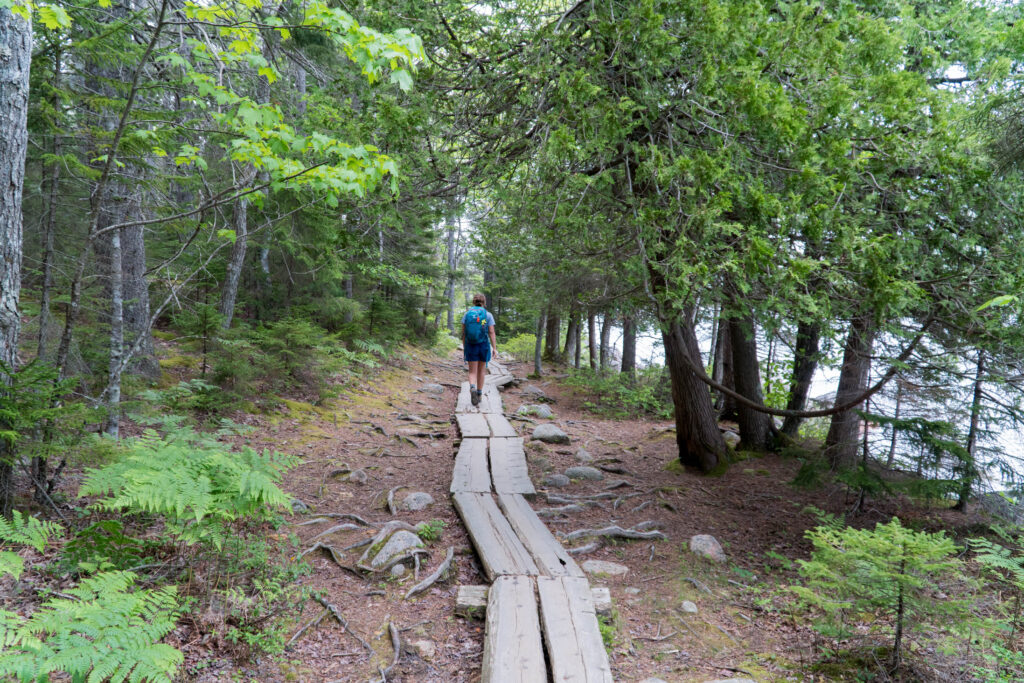
Travel off-Trail
All travel that does not utilize a designed trail, such as travel to remote areas, searches for bathroom privacy, and explorations near and around campsites, is defined as off-trail. Two primary factors increase how off-trail travel affects the land: durability of surfaces and vegetation and frequency of travel (or group size).
- Durability refers to the ability of surfaces or vegetation to withstand wear or remain stable.
- Frequency of use and large group size increases the likelihood that a large area will be trampled or that a small area will be trampled multiple times.
Surface Durability
The concept of durability is an important one for all travelers to understand.
Rock, sand, and gravel: These surfaces are highly durable and can tolerate repeated trampling and scuffing. (However, lichens that grow on rocks are vulnerable to repeated scuffing).
Ice and snow: The effect of travel across these surfaces is temporary, making them good choices for travel, assuming reasonable safety precautions are followed and the snow layer is of sufficient depth (6 inches or more) to prevent vegetation damage.
Vegetation: The resistance of vegetation to trampling varies. Careful decisions must be made when traveling across vegetation. Select areas of durable vegetation or sparse vegetation that are easily avoided. Dry grasses tend to be resistant to trampling. Wet meadows and other fragile vegetation quickly show the effects of trampling. Trampling leads other travelers to take the same route causing even more impact over time. Generally, travelers who must venture off-trail should spread out to avoid creating paths that encourage others to follow. Avoid vegetation whenever possible, especially on steep slopes where the effects of off-trail travel are magnified.
Living soil: Sometimes referred to as cryptobiotic crust or crypto, living soil is often found in desert environments and is highly vulnerable to foot traffic. Living soil consists of tiny communities of organisms that appear blackish and irregularly raised crusts on the desert floor. This crust retains moisture in dry climates and provides a protective layer, preventing erosion. One single footstep can destroy this fragile soil. It is essential to use developed trails in these areas. Travel across living soil should only be done when necessary. Walk on rocks or other durable surfaces if you must travel off-trail. In broad areas of living soil where damage is unavoidable, it is best to follow in one another’s footsteps so the smallest crust area is affected, precisely the opposite guidance for traveling through vegetation. Living soil is also highly vulnerable to mountain bicycle and stock travel.
Desert puddles and mud holes: Water is a preciously scarce resource for all living things in the desert. Don’t walk through desert puddles, mud holes or disturb surface water in any way. Potholes are also home to tiny desert animals.
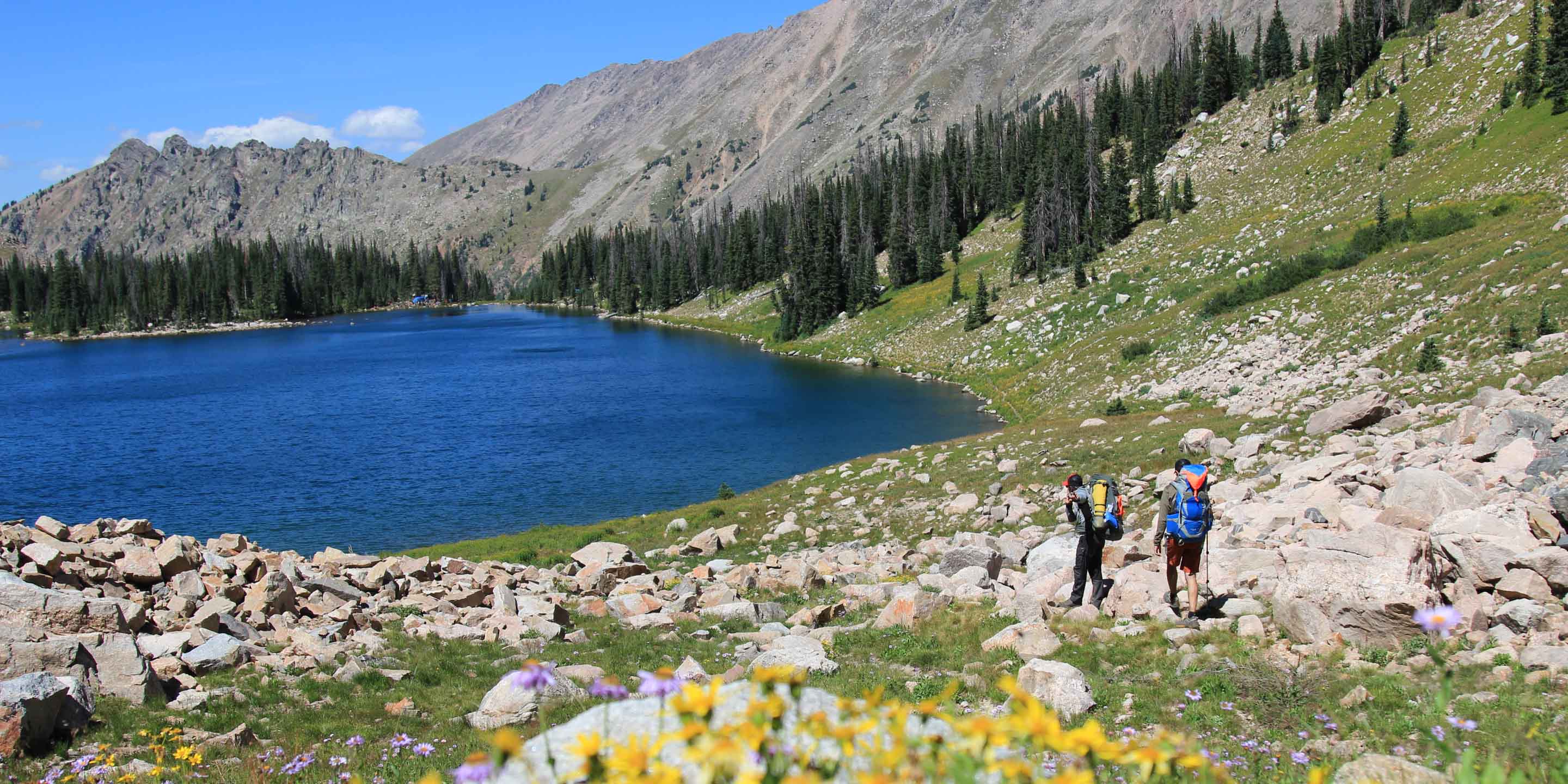
Camp on Durable Surfaces
Developed Camping
Impacts from camping are most easily minimized by using developed or existing campsites. When selecting these sites it is essential to ensure that the site fits group and gear size.
By continually trampling the boundary of a campsite, it expands over time, making the site ever larger in a phenomenon known as site creep. Avoid site creep by ensuring plenty of durable surfaces for all tents and communal camping or cooking gear. Designated tent pads and areas devoid of vegetation are the least impactful areas to camp on. When camping with a large group, seek a designated group site, as they are designed to hold multiple tents and isolate noise from others.
Backcountry Camping
Selecting an appropriate campsite is perhaps the most critical aspect of low-impact backcountry use. It requires the most significant degree of judgment and information and often involves making trade-offs between minimizing ecological and social impacts. A decision about where to camp should be based on information about the area’s level and type of use, the fragility of vegetation and soil, the likelihood of wildlife disturbance, an assessment of previous impacts, and your party’s potential to cause or avoid impact.
Choosing a Campsite in High-use Areas
Avoid camping close to water and trails, and select a site that is not easily visible to others. Even in popular areas, the sense of solitude can be enhanced by screening campsites and choosing an out-of-the-way site. Camping 200 feet (70 to 80 adult steps) away from the water’s edge is recommended because it allows access routes for wildlife. Be sure to follow local regulations related to campsite selection. Allow enough time and energy at the end of the day to select an appropriate site. Fatigue, bad weather, and late departure times are unacceptable excuses for choosing poor or fragile campsites. Generally, it is best to camp on sites that are so highly impacted that further careful use will cause no noticeable impact. These sites are prominent in popular areas because they have already lost their vegetation cover. Also, it is often possible to find a site that naturally lacks vegetation, such as exposed bedrock or sandy areas.
For high-impact sites, tents, traffic routes, and kitchen areas should be concentrated on already impacted areas. The objective is to confine impact to places that already show use and avoid enlarging the area of disturbance. When leaving camp, ensure it is clean and appealing for other campers who follow.
Camping in Undisturbed Remote Areas
Undisturbed areas are usually remote, see few visitors, and show no apparent impacts. Visit these unique places only if you are committed to and highly skilled in, Leave No Trace techniques. In undisturbed places, it is best to spread out tents, avoid repetitive traffic routes and move camp every night. The objective is to minimize the number of times any part of the site is trampled. In setting up camp, disperse tents and the kitchen on durable sites. Wear soft shoes around camp. Minimize activity around the kitchen and places where packs are stashed. The durable surfaces of giant rock slabs make good kitchen sites. Watch where you walk to avoid crushing vegetation and take alternate paths to water. Minimize the number of trips to water by carrying water containers. Always check regulations, but camping 200 feet (70 to 80 adult steps) from water is a good rule of thumb.
When breaking camp, take time to naturalize the site. Covering scuffed areas with natural materials (such as pine needles), brushing out footprints, and raking matted grassy areas with a stick will help the site recover and make it less obvious as a campsite. This extra effort will help hide any indication of where you camped and make it less likely that other backcountry travelers will camp in the same spot. The less often an undisturbed campsite is used, the better the chance of remaining undisturbed.
The most appropriate campsites in arid lands are on durable surfaces, such as rock and gravel, or on sites so highly impacted that further use will cause no additional disturbance. Previously impacted sites are prominent because they have already lost their vegetation cover or the rocky soils have been visibly disturbed. If choosing this type of site, ensure your spot is large enough to accommodate your entire group.
An undisturbed campsite, with no evidence of previous use, is appropriate in arid lands, provided it is on a non-vegetated, highly resistant surface. Rock, gravel, or sand are all excellent choices. It should never be necessary to camp on living soil, islands of vegetation, or within the precious green ribbons of desert creeks or streams. Beware when camping on sandy river bottoms and areas susceptible to flash floods.
Cooking areas, tents, and backpacks should be located on rock, sand, or gravel. Consciously choose durable travel routes between parts of your camp so that connecting trails do not develop. Vary your routes since the objective is to minimize the amount of trampling and compaction on any specific part of the campsite. Limit your stay to no more than two nights.
Never scrape away or clean sites of organic litter like leaves, and always minimize the removal of rocks and gravel. The organic litter will help to cushion trampling forces, limit the compaction of soils, release plant nutrients, and reduce the erosive forces of rainfall. Disturbing the lichen-coated and varnished rocks, known as desert pavement, can leave a visible impact for hundreds of years. Once overturned, these rocks are difficult to replace, and the lichens and varnish will not grow back within our lifetime.

Camping in River Corridors
River corridors are narrow strips of land and water with little room to disperse human activities. Campsites are often designated. It is generally best to camp on established sites located on beaches, sandbars, or non-vegetated sites below the high-water line.
Shop this Principle
Do you believe that education is the most effective line of defense for protecting the outdoors? Leave No Trace teaches millions of people the critical skills needed to care for the environment every year.
Let’s protect and enjoy our natural world together
Get the latest in Leave No Trace eNews in your inbox so you can stay informed and involved.

